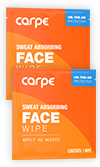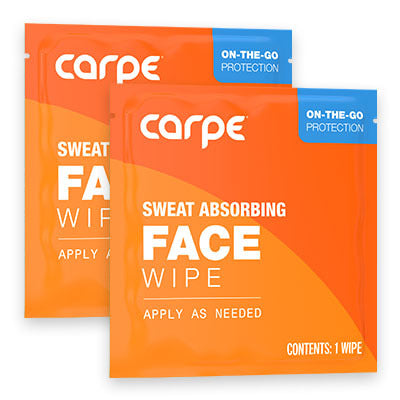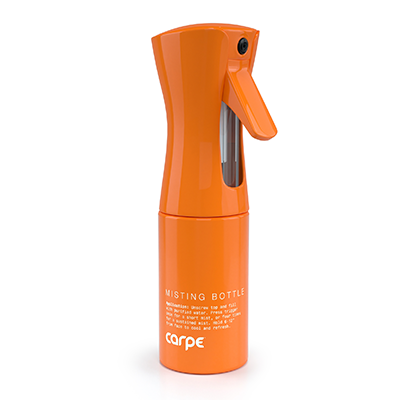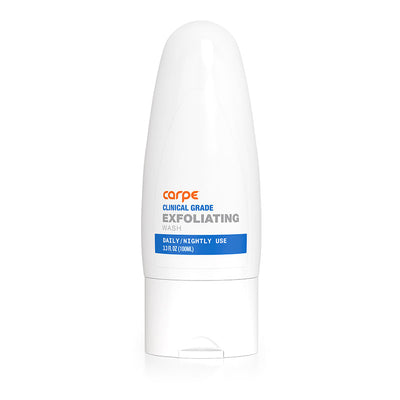Many people are worried about whether antiperspirant is safe, especially because it is so widely used. So, what does antiperspirant do to your body and is it bad for you? In the late 2000’s, a viral email was sent out in a mass blast discussing a correlation between antiperspirants with aluminum as an ingredient, which is a typical ingredient in over-the-counter topical treatments for hyperhidrosis, and the emergence of breast cancer. This email was forwarded to millions of individuals around the world, and the email made three primary claims:
- The aluminum in the antiperspirants that was applied to the underarms and under the breast was likely to enter the breast tissue through the skin, remain present in the breast tissue, and create a toxic imbalance of aluminum that led to cancerous cell division.
- The aluminum would also enter the skin through micro-abrasions caused by a razor when shaving, travel into the lymph nodes, and block the lymph nodes from releasing any toxic substances the body would typically release via sweat.
- Since women were more likely to shave their armpits and create the microabrasions, the aluminum build-up would be higher in women and be a contributing factor in what made women develop breast cancer at a higher rate than men. [1] [2]
In order to provide an unbiased review of the 3 claims regarding aluminum and cancer, each claim will be evaluated solely the scientific evidence on the topic provided by three non-profit organizations: the American Cancer Society, the National Cancer Institute, and WebMD.
Claim 1: Aluminum Enters the Tissue via the Skin and Causes Cancer
The email’s first claim is that active ingredients in antiperspirants, such as aluminum compounds like aluminum chlorohydrate, enter the breast tissue and lead to cancer. To stop sweat, these aluminum compounds block the sweat glands to prevent sweat from getting to the surface of the skin. Some hypotheses in cancer research have suggested these aluminum compounds might be absorbed by the skin and then create changes in the breast’s estrogen receptor cells. Since estrogen may promote the growth of both cancer and non-cancer breast cells, a few scientists have suggested that the aluminum-based ingredients in antiperspirants are a risk for catalyzing the growth of cancerous breast cells. However, no concrete evidence exists that the aluminum that enters the sweat gland is absorbed into the skin. One research trial that studied aluminum absorption from antiperspirants containing aluminum chlorohydrate applied to the underarms discovered that only a miniscule amount (0.012%) of aluminum chlorohydrate was absorbed. The actual aluminum absorbed according to this study and other studies is actually much less than the amount of aluminum a person absorbs just from eating typical foods with aluminum. Furthermore, no evidence indicates that breast cancer tissue contains more aluminum than healthy breast tissue. A study that observed women with breast cancer found no real difference in the concentration of aluminum between the cancer and the surrounding healthy tissue. [1][2][3]
The Verdict:
Evidence shows that aluminum does not enter the skin to a tissue-deep level or collect in the tissue. Additionally, even if the aluminum were to build up in the tissue (evidence indicates it does not), no ties between aluminum and breast cancer are shown.
Claim 2: Aluminum Particles Known as Parabens Enter the Tissue via Microabrasions and Sweat Glands, then Block Lymph Nodes from Removing Toxins
In addition to the claim surrounding aluminum, the email also claims the aluminum-based antiperspirant contains parabens that prevent lymph nodes from disposing of toxic waste. Since lymph nodes assist the body in removing possible threats to the body like viruses and bacteria, making sure all lymph nodes are functioning properly is a critical part of maintaining a healthy immune system. However, these lymph nodes are unrelated to sweating. First, lymph nodes do not release waste or toxins through sweating, and prohibiting sweating via aluminum would not affect their function. Most cancer-causing substances that enter the body are removed from the blood by either the lymph nodes or the kidneys, then flushed through the urinary tract. Second, and more importantly, lymph nodes are not even connected to sweat glands. Sweat glands are located in the skin, whereas the lymph nodes are distributed throughout key points throughout the body in a tissue level below the skin-deep positioning of the sweat glands. [1][3]
Some individuals would argue that since the majority of breast cancer cases emerge in the portion of the breast closest to the underarm (axillary) region, the parabens are driving these cases of breast cancer. However, the fact that this portion of the breast tissue has the largest mass by far means that this portion of the breast will naturally have more developments of cancer. Since the lymph nodes found throughout the breasts play a key role in the process of cleaning the blood, this area is naturally larger in mass. The underarm (axillary) nodes filter most of the liquid lymph flowing out of the breast before it goes back into the body's bloodstream. These nodes are under the arm, in the upper outer portion of the breast, and near the collarbone. The percentage of cancers in the higher outer part of the breast is proportionate to the breast tissue in that portion. There is no evidence to suggest that the location of cancers within the breast is related to using antiperspirants or underarm shaving. [1][2][3]
The Verdict:
Parabens do not enter the lymph nodes through the skin, and the lymph nodes do not even utilize sweating as a means to eliminate toxins.
Claim 3: Aluminum Percentages are Higher in Women and Correlates to Higher Breast Cancer Rates in Women
Breast cancer development rates are directly correlated to the mass of breast tissue. Research has shown that aluminum rates do not hold a statistically significant impact on breast cancer development. When compared to males, females have approximately 100 times the mass of breast tissue as males, and uncoincidentally, develop approximately 100 times the amount of breast cancer cases as males. Additionally, males are 100 times less likely than females to develop breast cancer since males have one one-hundredth the mass of breast tissue that women have. Furthermore, hormones also affect breast cancer development. Males with genetic and metabolic conditions that lead to increased estrogen levels possess a greater risk of developing breast cancer. This correlation and the research surrounding the relationship between estrogen and breast cancer highlights a natural connection between estrogen and breast cancer rates. [1][2][3]
The Verdict:
Females have the nearly identical amount of aluminum in their tissue as males, and the frequency of breast cancer diagnoses are correlated to the mass of breast tissue.
Conclusion:
Since the idea that there is no link between aluminum antiperspirants and cancer is also supported by the American Cancer Society, the National Cancer Institute, WebMD, and dozens of other non-profit organizations, the factual links to aluminum and cancer are nonexistent. Considering that these non-profit organizations operate with a primary goal of researching cancer to discover prevention and treatment methods for the disease, these organizations value discovering and spreading scientific truth over any potential profits made from scams surrounding antiperspirants. After considering that both private sector and public sector non-profit groups that have spent hundreds of millions of dollars researching a potential link between aluminum and cancer have also agreed the link is simply nonexistent, nearly no credible evidence or organization stands behind the faulty belief that aluminum antiperspirants cause cancer. [2][3] Don't be afraid to use over-the-counter topical treatments to treat your hyperhidrosis or to manage it with a doctor. Many people don't even know what antiperspirant does and how it is different from deodorant, so claims about antiperspirant causing cancer may lead many unimformed people to fear a safe and effective treatment. You need to advocate for your own health and learn everything there is to know about hyperhidrosis and its potential treatments in order to make informed decisions about your medical care.
Sources
- Antiperspirants and Breast Cancer Risk. (n.d.). Retrieved June 28, 2018, from https://www.cancer.org/cancer/cancer-causes/antiperspirants-and-breast-cancer-risk
- Antiperspirants/Deodorants and Breast Cancer. (n.d.). Retrieved June 27, 2018, from https://www.cancer.gov/about-cancer/causes-prevention/risk/myths/antiperspirant-fact-sheet
- Watson, S. (n.d.). Antiperspirant Safety: Should You Sweat It? Retrieved July 28, 2018, from https://www.webmd.com/skin-problems-and- treatments/features/antiperspirant-facts-safety#1




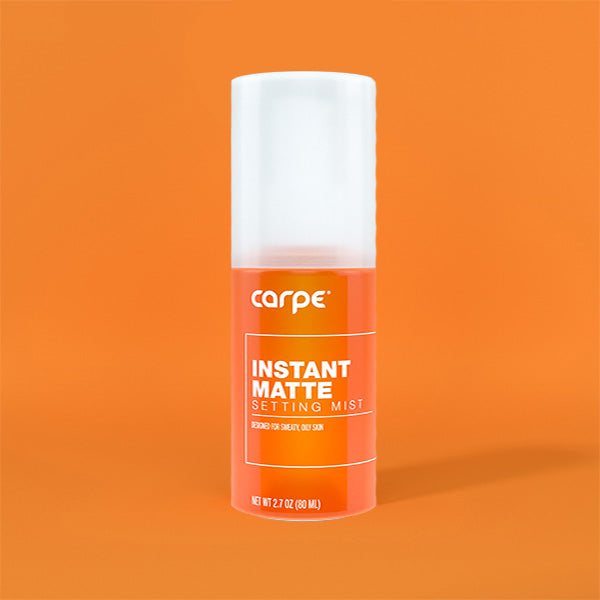

16790753702383.jpg?v=1679075372)

16790746985853.jpg?v=1679074700)


16790757289763.jpg?v=1679075731)






